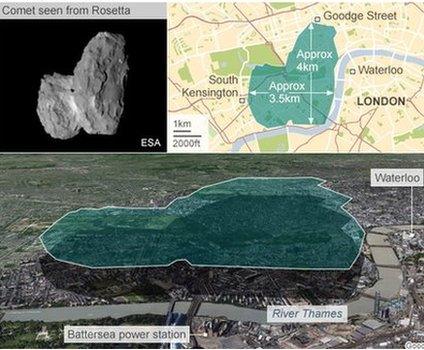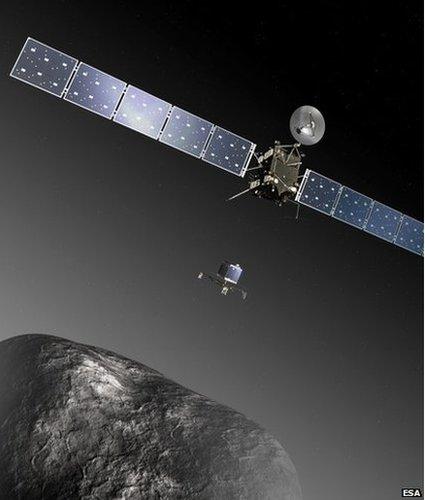The history of the Rosetta mission
- Published
After a ten-year journey, the European Space Agency's spacecraft Rosetta will arrive today at its comet target.
After a ten-year journey, the European Space Agency's spacecraft Rosetta has become the first ever to land on a comet.
It is the first time in history that anything like this has happened and it's taken lots of time and planning to get to this point.
Scientists hope Rosetta will be able to provide them with information on the 4km-wide lump of ice and rock dust in more detail than ever seen before.
They think it could reveal secrets about the early universe and how the earth was formed.

How big is comet 67P?
Rosetta will stay with the comet, which is called 'comet 67P', until December 2015.
The spacecraft started its journey from Europe's Spaceport in French Guiana, South America on 2 March 2004.
How the Philae probe will try to land on the comet
It has since travelled more than six billion kilometres, passing Earth three times and Mars once.
It has even flown past two asteroids.

Rosetta will drop a lander onto the comet
Rosetta was put into deep-space hibernation for over two years as it travelled out to the orbit of Jupiter.
At this distance from the Sun, the spacecraft could not make use of its solar power panels. It was awoken in January 2014.
